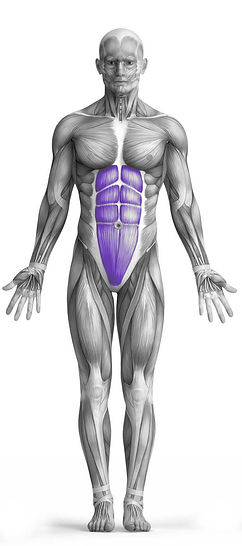Lying Leg Raise (On Bench) 101 Video Tutorial
0

Exercise Synopsis
Target Muscle Group
Abs
Secondary Targets
None
Execution
Isolation
Force Type
N/A
Required Equipment
Bodyweight
Fitness Level
Beginner
Variations
None
Alternatives
None
Timer
Hour
Minute
Second
Stopwatch
00:00:00:00
Overview
The Lying Leg Raise (On Bench) is an effective exercise that primarily targets the abdominal muscles. By lying flat on a bench and lifting the legs toward the ceiling while keeping the core engaged, this movement focuses on strengthening the lower abs. It requires no additional equipment beyond the bodyweight of the individual, making it an accessible and simple exercise for those looking to improve core strength. While the main focus is on the abs, the exercise also engages the hip flexors and lower back muscles as stabilizers, providing a full range of motion for abdominal activation.
How to Perform
Begin by setting up a flat bench with enough space for your legs to extend beyond one end.
Sit on the bench, positioning your hips near the edge, and then lie back.
Grip the bench at head level for support and balance throughout the movement.
Extend your legs straight out in front of you, keeping your feet and knees together, aligning them with your body. This is your starting position.
Focus on engaging your core, and then slowly raise your legs by bending at the hips only. Lift them until they are vertically aligned with your torso.
Without pausing, gently lower your legs back to the starting position, maintaining control over the movement.
Continue for the desired number of repetitions, ensuring smooth, controlled motions with each raise and lower.
★ Bonus: For exercises that involve external weights (such as dumbbells, barbells, or machines), the One Rep Max (1RM) calculator can help you estimate your maximum lifting capacity. Use it to track your strength progress and adjust your training for optimal results.
Tips
Avoid using momentum by swinging your legs. Focus on using your abdominal muscles to lift and lower your legs.
Keep your knees and legs together throughout the movement for proper form.
Ensure that your feet do not drop lower than the level of the bench to maintain the correct range of motion.
How Not to Perform
Avoid Using Momentum: Do not swing your legs or use any jerking motions to raise them. This can lead to improper muscle engagement and potential injury. Focus on slow, controlled movements to keep the tension on your abdominal muscles.
Don’t Arch Your Back: Ensure your lower back stays pressed against the bench throughout the exercise. Arching your back can place unnecessary strain on your spine and reduce the effectiveness of the movement.
Avoid Letting Your Feet Drop: Keep your feet from falling below the height of the bench. Dropping your feet too low takes the focus away from the abs and can cause strain on the hip flexors or lower back.
Don’t Overextend Your Legs: While raising your legs, avoid locking your knees or pushing them too far up. This can strain your joints and reduce the exercise’s focus on the core. Keep a slight bend in the knees to maintain proper alignment.
Don’t Rush: Perform each rep with control, avoiding fast or erratic movements. Rushing through the exercise reduces its effectiveness and can lead to injury. Slow down to engage the muscles fully and ensure proper form.
Avoid Holding Your Breath: Breathe consistently throughout the exercise. Holding your breath can increase pressure on your core and may lead to dizziness or discomfort. Exhale while lowering your legs and inhale as you raise them.
Don’t Neglect Core Engagement: Ensure your abs are engaged at all times. If you allow your core to relax, you’ll rely on other muscles like the hip flexors to complete the movement, diminishing the effectiveness of the exercise.
Variations
Variations of fitness exercises refer to different ways of performing a specific exercise or movement to target various muscle groups, intensities, or goals. These variations aim to challenge the body differently, prevent plateaus, and cater to individuals with varying fitness levels.
Alternatives
Alternative exercises in fitness refer to different movements or activities that target similar muscle groups or serve the same training purpose as the primary exercise. These alternative exercises can be used as substitutes when the original exercise is unavailable or challenging to perform due to various reasons such as equipment limitations, injuries, or personal preferences.








